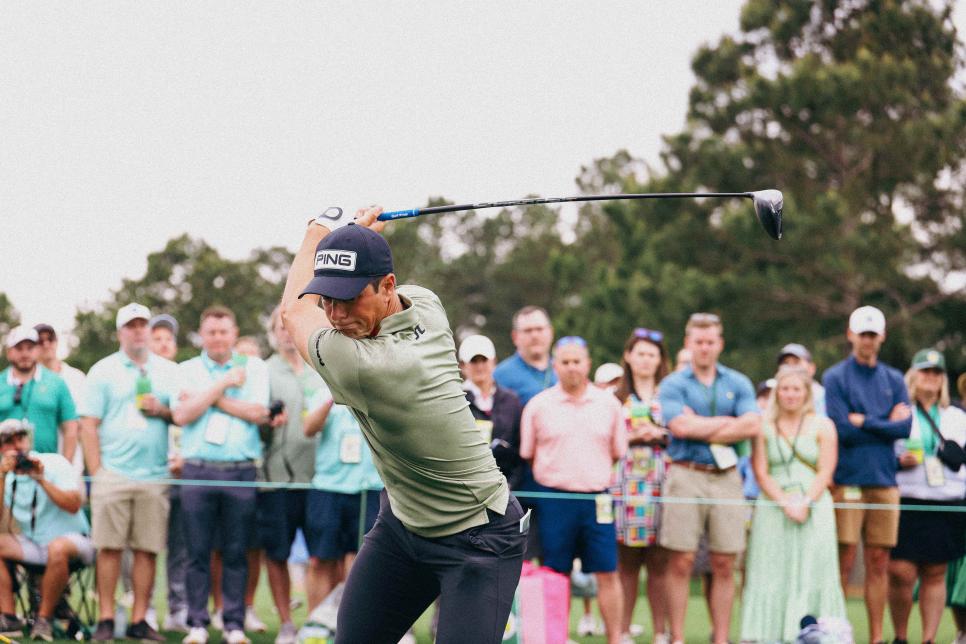FARMINGDALE, N.Y. — The most frustrating thing about improving your golf swing isn’t getting it right in the first place—it’s stopping it from changing when it does land in a good spot.
That’s what Viktor Hovland has spoken so candidly about over the past few seasons. But he’s finally on the right side of it now. Granted, Hovland is still talented enough to win tournaments without his swing feeling ideal, but either way, the Norwegian said his range session on Wednesday was the best he’s had in “two years.”
Speaking about it on Thursday, he went into a little more detail—and even dropped a good tip along the way.
What Viktor said about his golf swing
Here’s what Viktor said when I asked him about his golf swing during Thursday:
“The golf swing just seems counterintuitive and almost paradoxical sometimes where I know if I look at my 3D data, like I rotate way faster and way more than I used to do when I first came out on tour. Some of that is because I’m hitting it further. I’ve got more speed. I’m more dynamic. So then by that data, I’ve tried to almost slow down and not rotate as much off the ball. But then what I do is I just spin open. It was almost a little counterintuitive yesterday where I felt almost more dynamic off the ball, but instead of spinning around, I was moving more up and back. So it almost kept me more centered and more still, and from there, I can actually use my body like I used to before and not get it stuck.”
What it means
There’s a lot there, but these are the main beats:
When Viktor first came out on tour—he describes his golf swing’s sweet spot somewhere around 2020—he kept his arms more in front of his body in the early part of his backswing.
Then Hovland says as he got stronger and added speed to his swing, he began turning more in this part of the swing.
This pulled his hands more deep around him and pulled his left shoulder towards the ground.

It also created a gap between the centers of his upper and lower bodies right here, called a “sway gap”. Hovland and his coach, Grant Waite, use AI golf swing app Sportsbox AI to measure this among other things.

Creating a bigger sway gap isn’t necessarily a bad thing—it’s a go-to move for many draw players, because it allows them to keep their upper body back and release their hands so the ball moves from right-to-left.
The problem is this move can be a fade-killer for golfers who like to move the ball from left-to-right—which is exactly what Hovland is. As he’s spoken about himself, he couldn’t hit fades anymore. It was just a weird fit.
What you can learn from it
Hovland said he tried to fix this by trying to “slow down” on his backswing, but that didn’t work. It only made the problem worse.
What helped instead was feeling like he was making his backswing faster—”more dynamic,” in his words. He’d feel like he would swing the club away fast and stretch his right side up towards the sky.
On the range Wednesday, he said it felt like Fitzpatrick’s fast and upbeat backswing. And it worked. That feeling helped his arms move more upright, slimmed his sway gap, and brought his power fade back just at the perfect time (well, for European fans).
In all, here’s what you can learn from Hovland:
- Beware too much turn, too early in your backswing.
- Beware swaying your upper body too far on the backswing.
- Getting your upper body behind your lower on the backswing is a great draw move.
- A sway gap that’s too big can cause blocks and hooks; too small can cause slices.
- Stretching up towards the sky as you turn is the key move.
That last point is important. Stretching up as you turn around. Something we analyzed in Scottie Scheffler’s golf swing which you can watch below (or right here!)
This article was originally published on golfdigest.com




